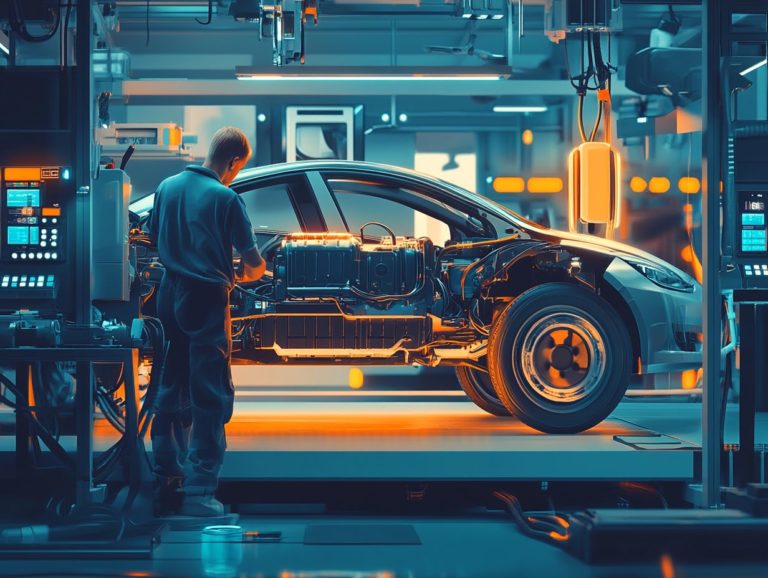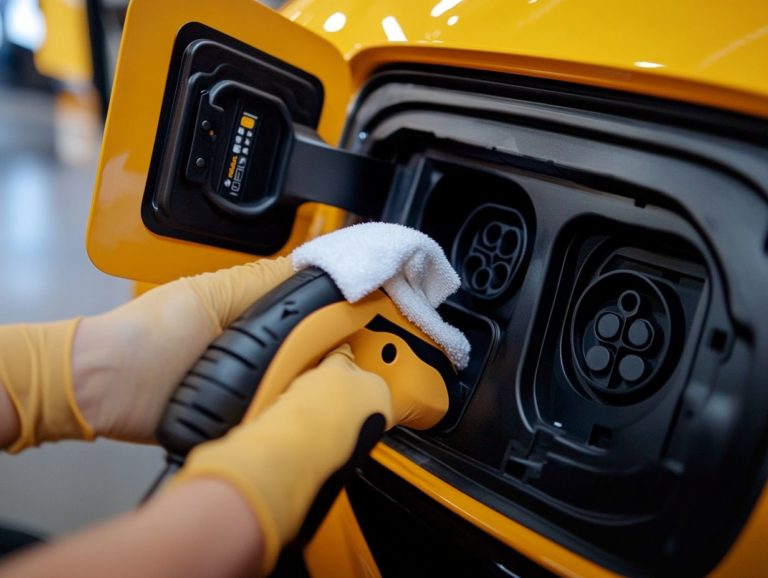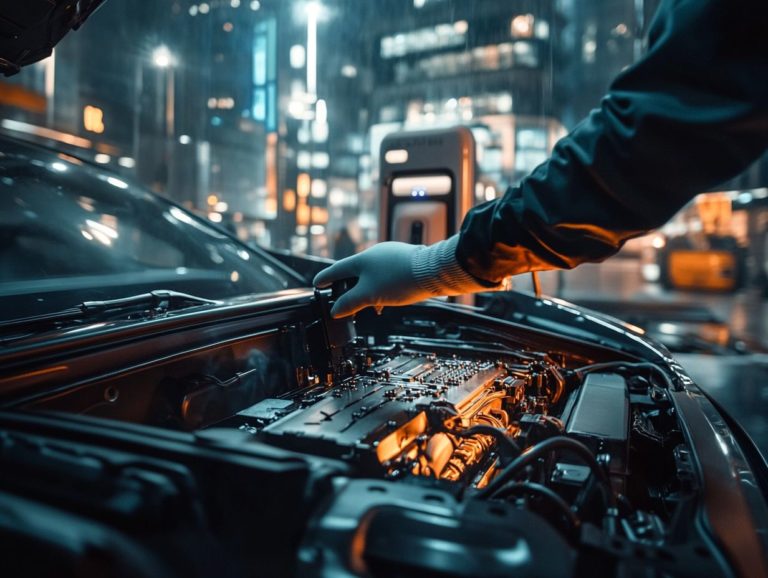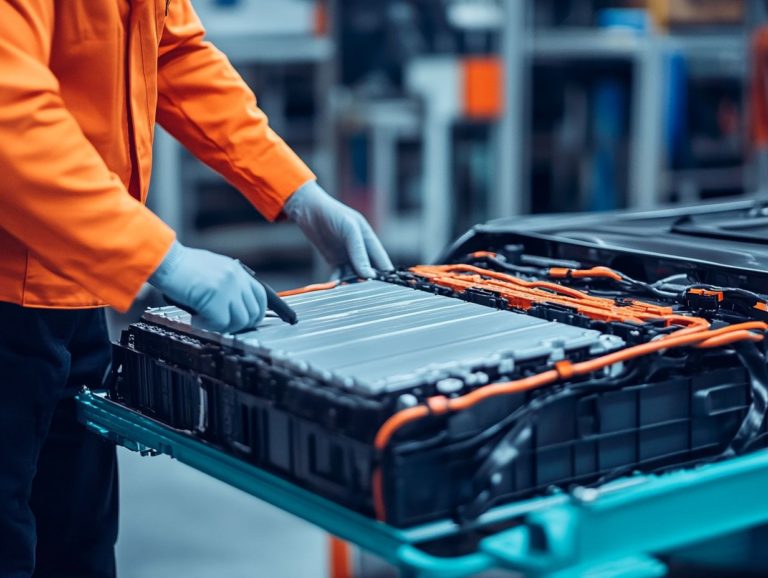maintaining your ev’s electrical system
As electric vehicles (EVs) rise in popularity, understanding their complex electrical systems becomes vital for optimal performance and longevity.
This guide outlines the essential components and functions of your EV’s electrical system. It enables you to identify common warning signs of potential issues.
It offers practical troubleshooting tips, effective maintenance strategies, and valuable insights on maximizing battery life.
Armed with this knowledge, you ll be well-equipped to tackle common problems and extend the lifespan of your EV, ensuring a smooth and efficient driving experience for years ahead.
Contents
- Key Takeaways:
- Understanding Your EV’s Electrical System
- Signs of Electrical System Issues
- Troubleshooting and Maintenance
- Common Electrical Issues and How to Fix Them
- Maximizing Your EV’s Battery Life
- Extending the Lifespan of Your EV’s Electrical System
- Frequently Asked Questions
- What are the main components of an EV s electrical system?
- How often should I maintain my EV s electrical system?
- What are some signs that my EV s electrical system needs maintenance?
- Can I perform maintenance on my EV s electrical system myself?
- How can I extend the lifespan of my EV s battery?
- Is it necessary to replace the battery in an EV?
Key Takeaways:
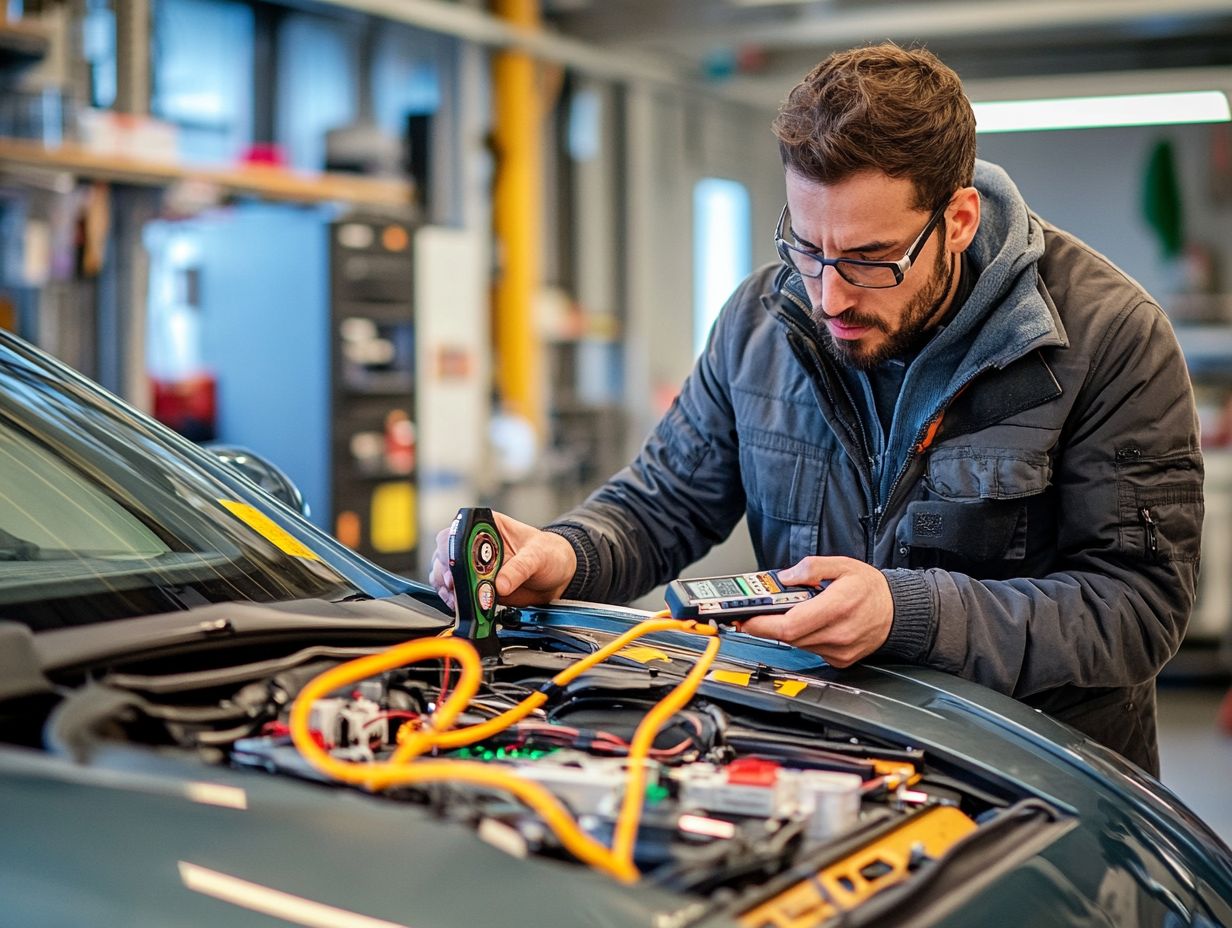
Regularly check and maintain your EV’s electrical system to avoid potential issues and prolong its lifespan.
Understand the warning signs of electrical system problems and troubleshoot them promptly to prevent costly repairs.
Effective charging and storage practices are key to maximizing your EV’s battery life and ensuring a smooth driving experience.
Understanding Your EV’s Electrical System
Understanding your electric vehicle’s (EV) electrical system is essential for achieving optimal performance, longevity, and safety, including the best practices for EV battery maintenance.
This complex system consists of various components, including the battery, regenerative braking, and systems that manage high electricity levels for the vehicle, all working in unison to improve your driving experience.
Therefore, adopting proper maintenance practices and understanding the functionality of each component is crucial for maintaining your vehicle’s efficiency and meeting safety standards.
Owning an EV is becoming more complex, demanding a deeper understanding of how these systems interact with conventional vehicles and the specific maintenance schedules required.
Components and Functions
The components of an electric vehicle’s electrical system comprise the battery, regenerative braking system, and several high-voltage systems that deftly manage power distribution.
These essential elements work in perfect harmony to enhance energy efficiency and overall performance.
For instance, the battery acts as your primary energy source, storing electrical energy for propulsion and ensuring you have ample power for acceleration and those daily commutes.
Meanwhile, the regenerative braking system is crucial for recovering energy during braking. It transforms kinetic energy back into electrical energy, recharging the battery in the process.
High-voltage systems, which include components like inverters and converters, intelligently oversee this power flow, directing it to various parts of the vehicle while ensuring optimal performance and safety.
Together, these components create a seamless network that maximizes energy utilization, ultimately extending the vehicle’s longevity and reducing the need for extensive battery maintenance.
Signs of Electrical System Issues
Recognizing the signs of electrical system issues in your electric vehicle is crucial for maintaining peak performance and preparing your EV for long trips to ensure your safety.
Watch for these warning signs!
- Irregular battery diagnostics
- Unusual noises from the engine or electrical components
- Unexpected declines in driving efficiency
Understanding these signs could save you from costly repairs!
By addressing these concerns promptly, you can not only avoid costly repairs but also enhance your driving experience and extend the longevity of your vehicle.
Common Warning Signs
Be on the lookout for common warning signs that could suggest problems within your electric vehicle’s electrical system. Dashboard warning lights, reduced driving efficiency, and unusual noises during operation are all red flags that shouldn’t be ignored.
If you find your vehicle having trouble starting or experiencing power loss from time to time, these could point to potential battery maintenance issues. Such symptoms often indicate that the electrical connections may be corroded or the battery itself might be nearing the end of its life.
Regular maintenance checks are vital for ensuring that your battery terminals remain clean and free from oxidation. Ignoring these warning signs can lead to diminished performance and unexpected breakdowns, significantly impacting your vehicle’s overall functionality.
Proactive measures and timely inspections are essential for maintaining the optimal performance of your electric vehicle’s electrical system, including knowing essential EV maintenance tips.
Troubleshooting and Maintenance
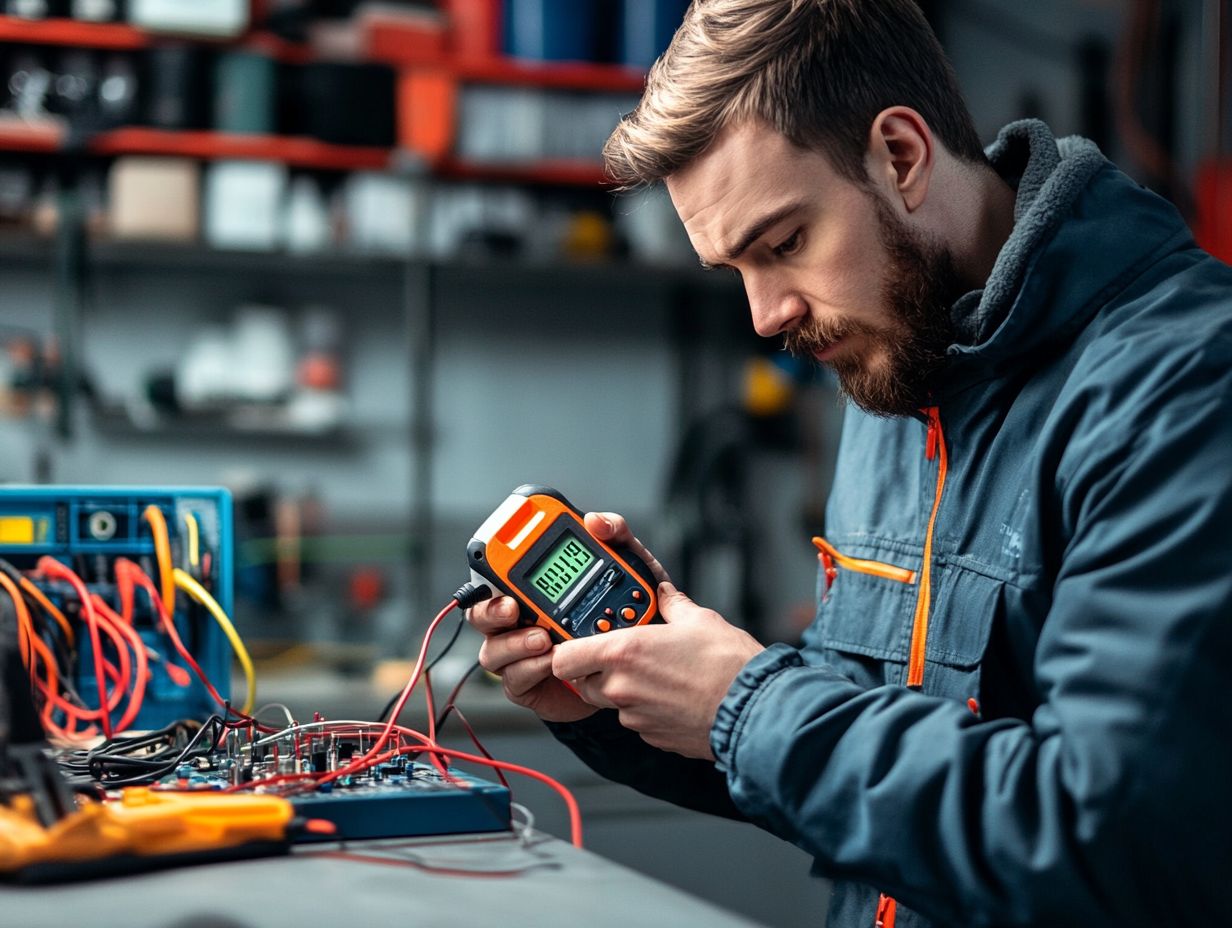
Troubleshooting and maintaining your electric vehicle requires a proactive approach. To stay informed on advancements, consider exploring the future of electric vehicle maintenance, which ensures longevity and optimal performance.
Tackle minor issues now to avoid costly repairs later! Focus on essential areas such as:
- Check battery maintenance.
- Inspect high-voltage systems.
- Prepare for emergency response readiness.
This way, you ll be well-prepared to tackle any potential problems before they surface.
DIY Checks and Maintenance Tips
Conducting DIY checks on your electric vehicle is an excellent way to maintain its performance and ensure your safety. This is especially important for battery care and monitoring for fluid leaks.
Regular inspections allow you to catch potential issues before they escalate into major problems.
- Start with checking the battery levels, which you can usually do right from your vehicle’s dashboard. Make sure it’s adequately charged for optimal performance.
- Next, inspect the ground beneath your vehicle for fluid leaks and check the fluid reservoirs regularly.
- Don t overlook tire pressure; use a tire pressure gauge or the onboard system to ensure your tires are inflated to the recommended levels.
Maintaining clean, well-aligned tires boosts driving efficiency and enhances safety. By incorporating these routine checks into your schedule, you can significantly prolong your vehicle’s life and enjoy a smooth, trouble-free ride.
Common Electrical Issues and How to Fix Them
Common electrical system issues in electric vehicles can often be diagnosed and addressed with solutions designed to save on maintenance costs while extending battery life.
These problems can range from minor electrical glitches to serious concerns, such as battery degradation or failing high-voltage systems. By identifying these challenges early, you can significantly enhance your vehicle’s driving experience and overall reliability.
Identifying and Addressing Issues
Identifying and addressing electrical system issues in electric vehicles requires a systematic approach. Regular maintenance checks and comprehensive battery diagnostics, along with preparing your EV for seasonal changes, are essential.
Use tools like multimeters and OBD-II scanners to check your vehicle’s electrical parts. A thorough visual inspection can help you spot signs of wear and tear.
Common problems, like battery performance issues or wiring faults, can often be resolved through methodical troubleshooting and timely replacement of faulty components.
By adhering to a well-defined checklist during maintenance, you can pinpoint potential solutions, ensuring the longevity and efficiency of your electric vehicle’s electrical system, while also understanding the role of EV maintenance in safety.
Maximizing Your EV’s Battery Life
Act now! Maximizing your electric vehicle’s battery life is essential for elevating your driving efficiency and minimizing maintenance expenses.
By adopting effective charging practices, committing to regular battery maintenance, and embracing mindful driving habits, you can greatly enhance the longevity of your battery. This ensures that you derive the utmost satisfaction from your electric vehicle ownership experience.
Effective Charging and Storage Practices
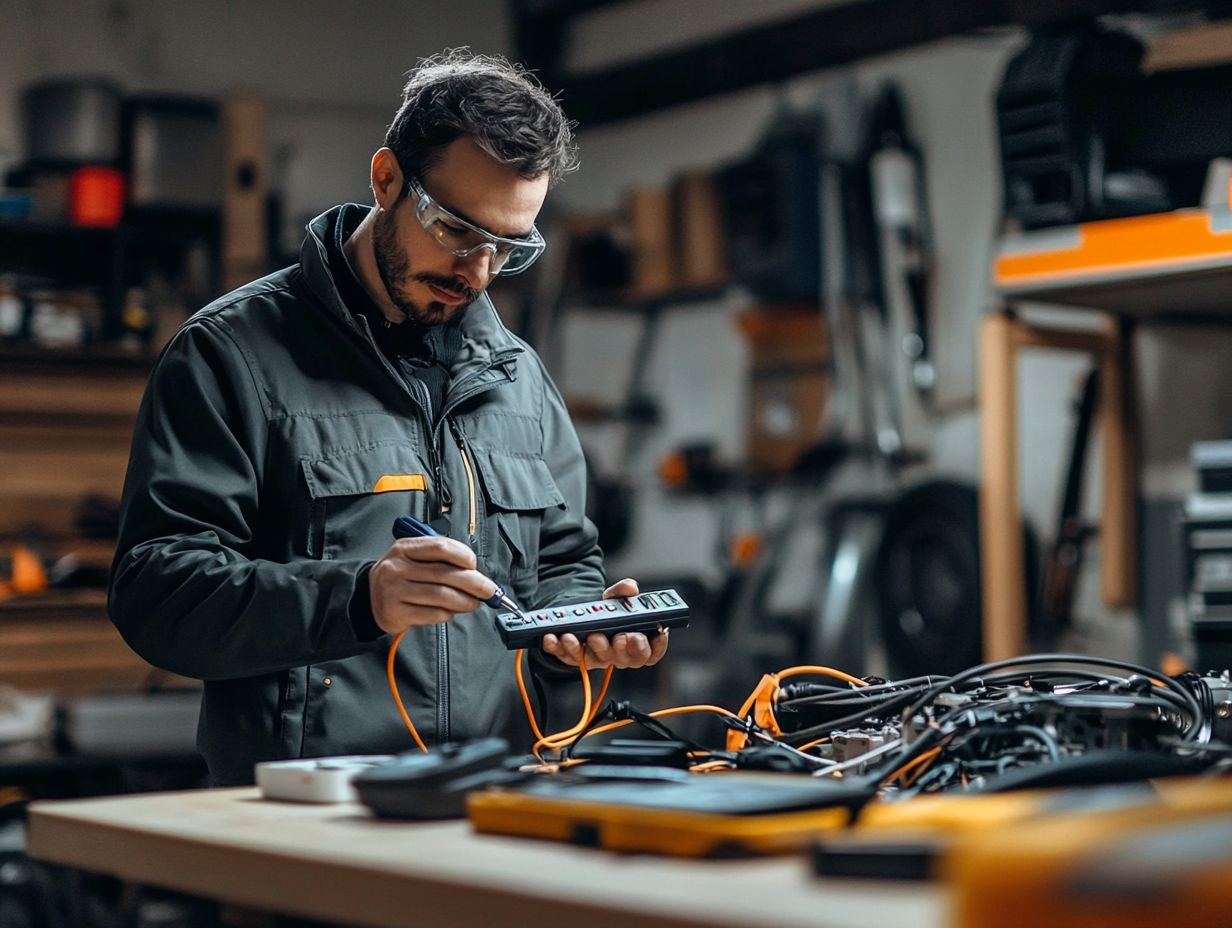
Adopting effective charging and storage practices is essential for maintaining your electric vehicle’s battery health and overall efficiency. A well-managed battery extends its lifespan and ensures optimal performance.
Understand that charging frequency plays a pivotal role; for example, avoid full depletion before recharging to mitigate damage and enhance performance. Optimal charging times often align with off-peak hours when energy costs may be reduced.
Safe storage conditions like keeping your vehicle in a temperature-regulated environment impact battery longevity. By following these best practices, you can cultivate a healthier battery environment and maximize your EV’s potential.
Extending the Lifespan of Your EV’s Electrical System
Extending the lifespan of your electric vehicle’s electrical system requires regular maintenance and an understanding of its components, as outlined in the essential guide to EV maintenance.
Stick to a maintenance schedule and visit your dealer when needed to prevent wear and ensure optimal performance.
Tips for Long-Term Maintenance
Taking care of your electric vehicle can greatly improve its reliability and driving experience.
Be proactive! Address small issues before they turn into major headaches. Schedule service checks every six to twelve months to spot potential battery or software concerns early.
Check your tires, brakes, and fluid levels regularly. These parts are crucial for safety and efficiency.
Follow the manufacturer’s guidelines for specific maintenance schedules tailored to electric vehicles.
By using these strategies, you can enjoy your driving experiences with greater peace of mind.
Frequently Asked Questions
What are the main components of an EV s electrical system?
The main components include the battery, electric motor, power electronics (which control electricity usage), and the charging port.
How often should I maintain my EV s electrical system?
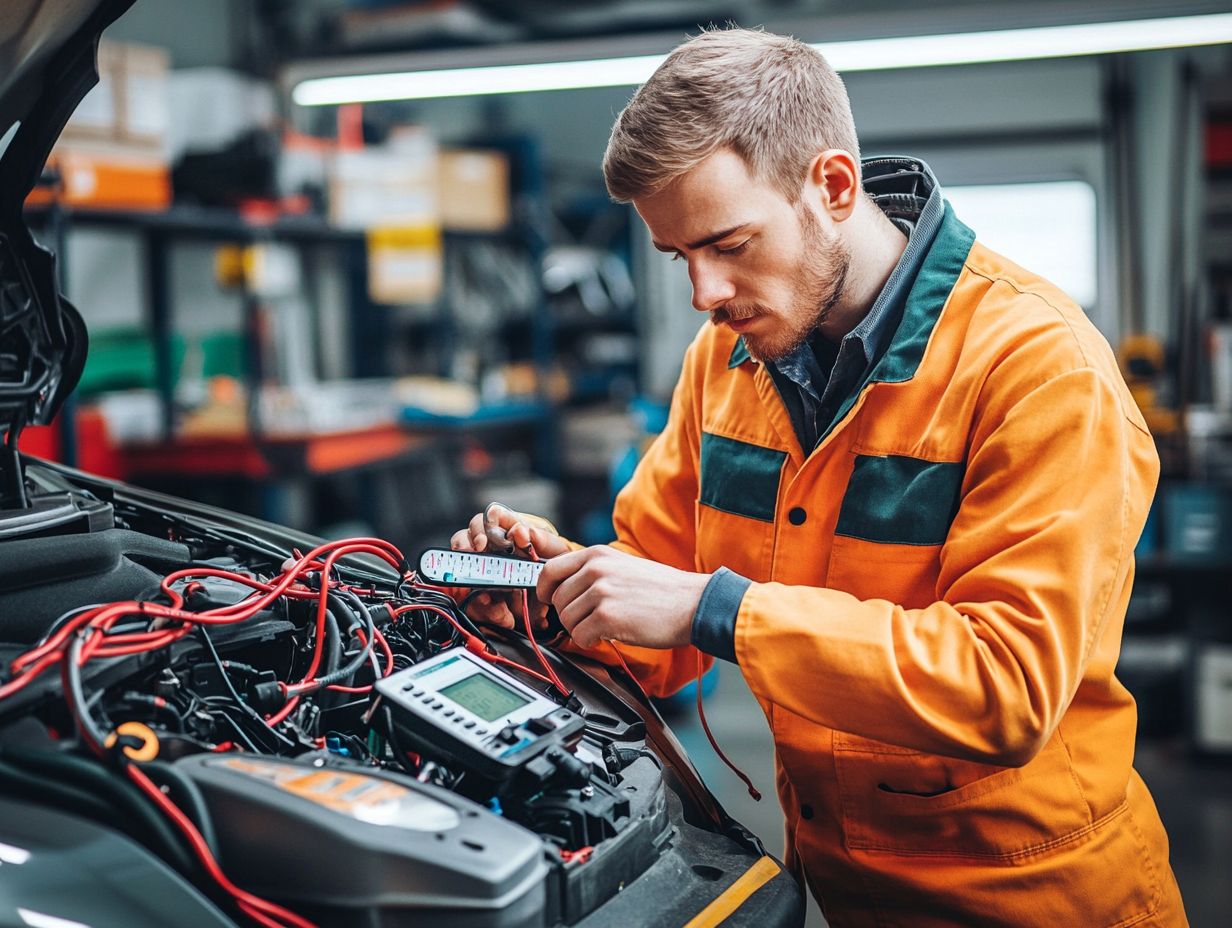
Follow the manufacturer’s maintenance schedule, usually every 6-12 months.
What are some signs that my EV s electrical system needs maintenance?
Watch for signs like a drop in driving range, strange noises, vibrations, or warning lights on the dashboard.
Can I perform maintenance on my EV s electrical system myself?
You can handle basic tasks, like cleaning the charging port, but let a trained technician take care of more complicated jobs.
How can I extend the lifespan of my EV s battery?
Want to make your battery last longer? Follow the manufacturer s charging guidelines and avoid frequent rapid charging.
Avoid extreme temperatures and keep the battery at a moderate charge level.
Is it necessary to replace the battery in an EV?
An EV s battery may need replacement after 8-10 years, depending on the model and how you use it. With proper care, you can extend its lifespan and delay replacement.

